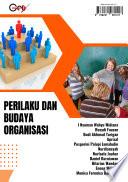
Matematika Bisnis Untuk Pemula
Matematika merupakan cabang ilmu yang kerap kali dihindari oleh orang-orang yang padahal dengan mempelajari ilmu matematika sangat diperlukan untuk menyelesaikan beberapa permasalahan atau persoalan dalam kehidupan sehari-hari. Salah satunya adalah permasalahan ekonomi khususnya permasalahan bisnis. Melalui buku ini, diharapkan dapat menyampaikan bahwa belajar matematika itu sangat mudah. Setiap materi dan submateri dibahas secara secara singkat dan dilengkapi dengan contoh soal dan penyelesaiannya sehingga mahasiswa akan lebih mudah memahaminya. Selain itu, terdapat banyak soal untuk latihan sehingga pemahaman materi dan submateri akan semakin mendalam.
- ISBN 13 : 6232642589
- ISBN 10 : 9786232642584
- Judul : Matematika Bisnis Untuk Pemula
- Pengarang : Muh. Irfandy Azis,
- Kategori : Business & Economics
- Penerbit : Syiah Kuala University Press
- Bahasa : id
- Tahun : 2021
- Halaman : 169
- Google Book : https://play.google.com/store/books/details?id=fk0iEAAAQBAJ&source=gbs_api
-
Ketersediaan :
Matematika merupakan cabang ilmu yang kerap kali dihindari oleh orang-orang yang padahal dengan mempelajari ilmu matematika sangat diperlukan untuk menyelesaikan beberapa permasalahan atau persoalan dalam kehidupan sehari-hari.









